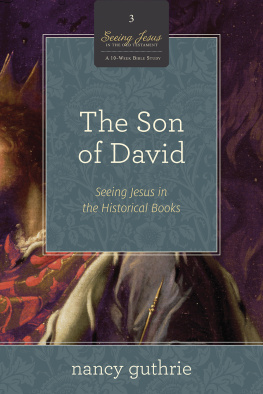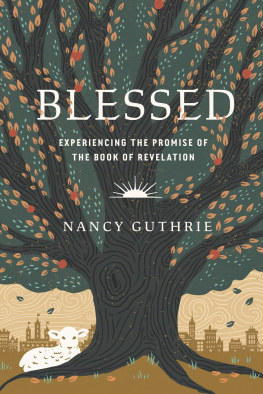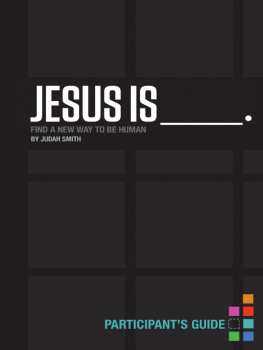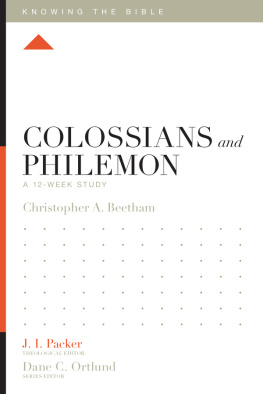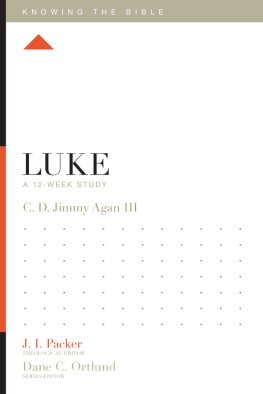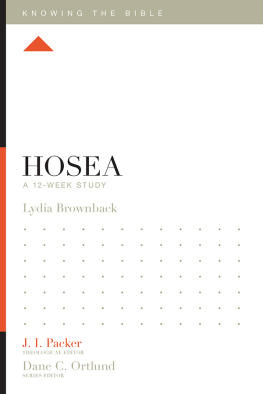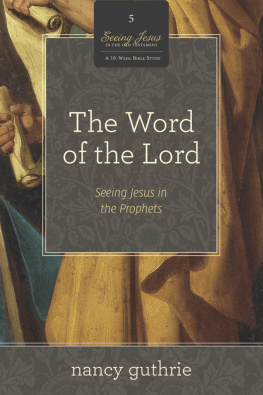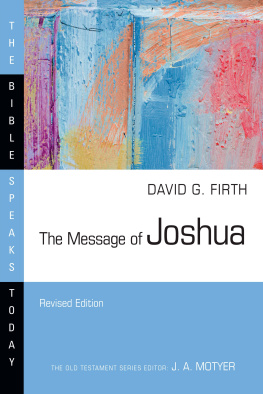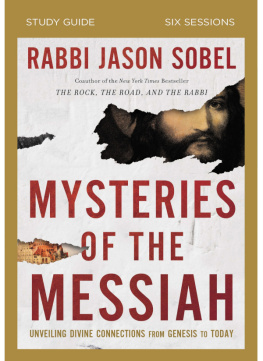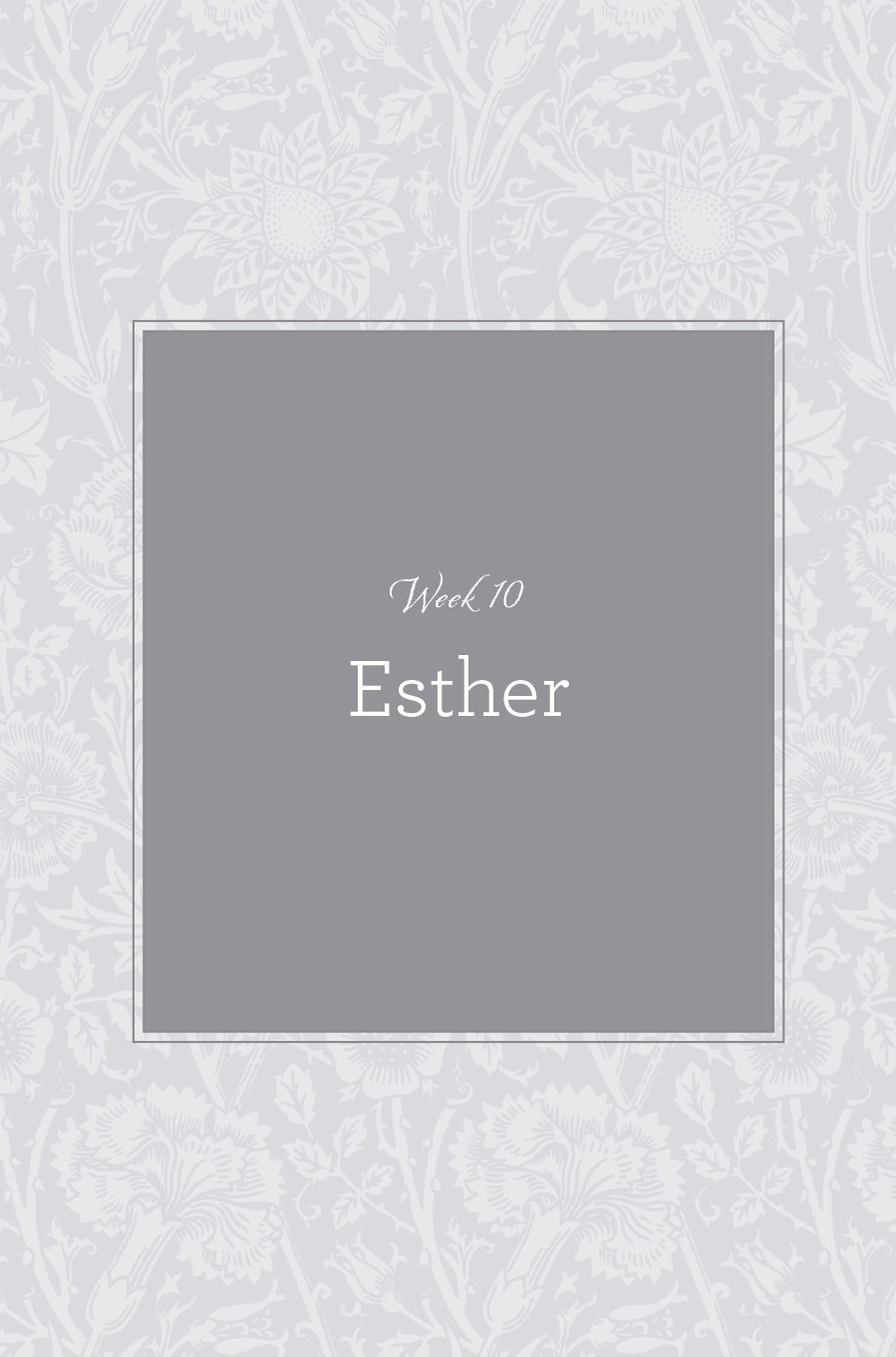Thank you for downloading this Crossway book.
Sign-up for the Crossway Newsletter for updates on special offers, new resources, and exciting global ministry initiatives:
Crossway Newsletter
Or, if you prefer, we would love to connect with you online:
Facebook
Twitter
Google +
Praise for The Son of David
The Son of David is a book about Jesus. Nancy takes the reader through the plotline of redemption revealed in the historical narratives. All of the heroic figures in the Old Testament were mere pointers to the greater Savior, Redeemer, Shepherd, and King who was to come, namely, Jesus. This book argues very convincingly that all the wonderful promises presented in shadow form have found their ultimate completion in the one who reigns perfectly over his kingdom. Thank you, Nancy, for your humble heart and prayer that desire to see more and more people give their affections to this amazing paradoxical kingliness that leads us to serve others with humility and courage.
Kathleen Um, Director of Family and Womens Ministries, Citylife Presbyterian Church, Boston, Massachusetts
As Christian growth leaders, we are constantly searching for Bible study material that is scripturally sound and grounded on biblical truths. Nancy Guthrie has a wonderful gift of keeping her studies interesting and challenging. The Son of David , perhaps her most inspiring work in the Seeing Jesus in the Old Testament series thus far, is no exception. No matter where students are in their spiritual walk or in their realm of biblical knowledge, they will be inspired as they discover Jesus in the books of the Old Testament.
Kitty Kosman, Christ the King Lutheran Church, Memphis, Tennessee
Nancy Guthries Seeing Jesus in the Old Testament series brings a depth to womens ministries that we desperately need. When you complete The Son of David , you will have a wonderful grasp of the historical books, but also your heart will melt as you see Jesus unveiled in every book. John Piper has said, Beholding is becoming, and this is the kind of study that helps us behold our God and, in so doing, become the godly women we long to be.
Dee Brestin, author, Idol Lies and The God of All Comfort
Praise for the Seeing Jesus in the Old Testament Series:
I am thankful for a series that ties together the truths of all of Scripture, from beginning to end. Nancys humble and genuine examples, careful study, and thoughtful application questions have encouraged women at our church to know and love Jesus, even as they come to know and understand the Old Testament. By grace alone is evident throughout this study.
Melissa Kummerer, Director of Community Life, All Saints Presbyterian Church, Austin, Texas
These studies are a rare blend of being theologically rich but very down-to-earth, personable, and practical. I am confident when I pick up a study guide by Nancy that it is well researched, challenging to either a young or mature believer, and consistently Word-centered and gospel-centered.
Yvonne Shorb, Calvary Bible Fellowship Church, Coopersburg, Pennsylvania
Our womens groups have delighted in this Bible study treasure. Many women were introduced for the first time to the Old Testament and were able to dig in, understand, and savor its rich meaning. Each week I've loved hearing the ah-hahs of those in my group as the Scripture revealing Christ opens up and begins to anchor their faith more deeply.
Becky Moltumyr, Director of Womens Ministry and LIFEgroup Connection, Brookside Church, Omaha, Nebraska
I am constantly searching for authors who can further equip me to teach Christ from all of Scripture. Nancy Guthries Seeing Jesus in the Old Testament series helps readers connect the New Testament to the Old Testament and shows how both point to Christ. Her thought-provoking and practical study questions have helped me turn lectures into discussions. This series has been transformative for me, my staff, and my students. I highly recommend it.
Rev. David Dobbs, Pastor of Student Ministries, First Presbyterian Church, Rome, Georgia
While the book of Esther falls in the Bible after the books of Ezra and Nehemiah, the story related in the book takes place right in the middle of the events described in Ezra and Nehemiah. It takes place between the first wave of Jews making their way back to Jerusalem to rebuild the temple and Ezras leading the second return of a group of Jewish exiles to Jerusalem. The first king over the Persian Empire, Cyrus, had released Jews to go back to Jerusalem. When Darius ascended to the throne of Persia, he affirmed the earlier decree of Cyrus and encouraged the continuation of the work. The story of Esther takes place during the reign of the next king, Xerxes (also called Ahasuerus), and before Artaxerxes, the king to whom Nehemiah was a cupbearer.
1. Read Esther 1, which introduces us to the human king ruling over Gods people in those days. What sense do you get about this king in regard to what is important to him and how he uses his authority?
2. Read Esther 2:17, which introduces us to Mordecai and Esther. List some details we learn in these verses about each of them.
3. Read Esther 2:818 and think through the realities of what is happening here. Each of these young women is going to spend one night with the king, and those whom he doesnt choose to be his queen will spend the rest of their lives living in the harem, never having a family but kept in comfort. The text doesnt overtly reveal how Esther feels about this, whether she sees it as a great loss of her plans for her life or as a great opportunity. We do see her responding to the test of serving a foreign king very differently from how another young Jew did. Read Daniel 1:121 and 3:818 and note similarities and differences between Daniels experience in the pagan kings palace and Esthers experience in the pagan kings palace.
Similarities:
Differences:
4. Read Esther 2:1923 and summarize in a sentence or two what happened.
5. In chapter 3 we are introduced to the kings right-hand man, Haman, and told that he is the Agagite. This doesnt mean much to us, but it would have to the Jews living in Susa who knew their Jewish history. Read Exodus 17:816; 1 Samuel 15:133; and Esther 3:16. How might the history shown here explain what motivates both Mordecai and Hamans attitudes and actions? (Remember from 2:5 that Mordecai, like King Saul, was a descendant of Kish.)
6. Describe in a sentence or two what happens in Esther 3:715.
7. Read Esther 4. What does Mordecai want Esther to do, and how does he seek to motivate her to do it (vv. 1214)?
8. Read Esther 5:18. What does Esther now have the king on record as saying, as she works up to asking that her life and that of her people be spared?
9. Read Esther 5:914. Note the advice given to Haman by his wife and friends.
10. Read Esther 6. Esther is one of those books that never mentions God. But how do you see God at work in hidden ways in this chapter?
11. Describe in a sentence or two what happens in Esther 7.
12. Haman is dead, but that does not deal with the edict broadcast throughout the kingdom that the Jews are to be killed, an edict that cannot be revoked or retracted. What plan did Mordecai come up with to deal with this edict, and how did it work out, according to Esther 8:99:7?

